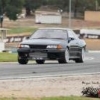Kando Dynamics Turbo
Announcements
-
Similar Content
-
Latest Posts
-
By Dose Pipe Sutututu · Posted
It's not bad, it's just not flexible. And say if you have any leaks between the MAF and plenum, well then your load axis goes out the window. Here's a real world scenario, I blew off an intercooler hose last track day, as the clamp decided to Bluetooth itself somewhere. Still continued to do 2 laps and drive it to the pub for a couple of beers then home. Good luck doing that with a MAF setup -
By joshuaho96 · Posted
Is MAF load really that bad? I'm not trying to do big power, my only real desire is VCAM and flex fuel support so I'm not terrified of blowing my engine apart from CA's appalling 95 RON "premium" fuel. Stuff like playing with closed loop boost control and really dialing in my transient fueling and ignition are frankly just to prove to myself I remembered something from uni. -
By PotatoCake · Posted
Thats what ive been doing. Ive got a million questions but i know theyve probably all been answered before at some stage. Todays research included nismo heritage seat covers, s3 projector headlight retrofits and how to remove/paint the rocker covers -
By Dose Pipe Sutututu · Posted
Not really, I think of you search stuff you'll most likely end up on @R3N3's build thread or mine lol. Better off using Google to search SAU, the built in forum search isn't as sophisticated as Google's search.
-




Recommended Posts
Create an account or sign in to comment
You need to be a member in order to leave a comment
Create an account
Sign up for a new account in our community. It's easy!
Register a new accountSign in
Already have an account? Sign in here.
Sign In Now